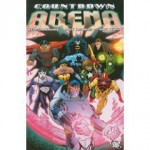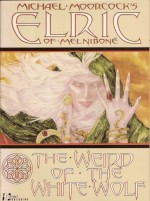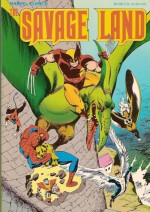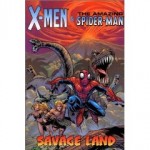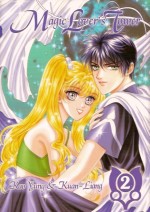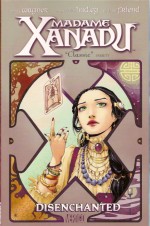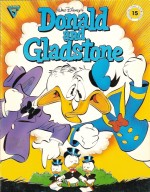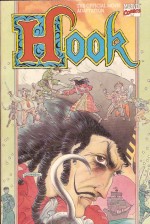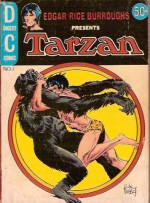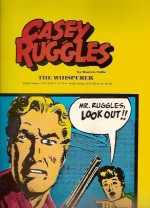
By Warren Tufts (Western Winds Productions)
No ISBN
Warren Tufts was an incredibly gifted artist and storyteller cursed by simply being born too late. He is best remembered now – if at all – for creating two of the most beautiful western comics strips of all time, but at a time when the heyday of newspaper syndicated entertainment was gradually giving way to the television age. Had he been working in Adventure’s Golden Age he would undoubtedly be a household name – at least in comics fans’ houses
Born in Fresno, California on 12th December 1925 Tufts was a superb and meticulous craftsman with a canny grasp of character and a great ear for dialogue whose art was stately in a representational manner and favourably compared to both Hal Foster’s Prince Valiant and the best of Alex Raymond. On May 22nd 1949 he began the seminal Casey Ruggles – A Saga of the West as a colour Sunday page, following with a daily black and white strip beginning on September 19th of that year, working for the United Features Syndicate, purveyors of such landmark strips as Fritzi Ritz and L’il Abner.
Ruggles was a dynamic ex-cavalry sergeant in 1849 making his way to California to find his fortune (the storyline of both features until 1950 where daily and Sunday strips divided into separate tales), blending history into the dramas with such personages as Millard Fillmore, William Fargo, Jean Lafitte and Kit Carson making their presences felt in various gripping two-fisted action-adventures. The lush, expansive tales were crisply told and highly engaging, but Tufts was a driven perfectionist regularly working 80-hour weeks at the drawing board and consequently often missed deadlines.
This led him to use many assistants and old comic-book fans will be gratified to discover that then rising artists Al Plastino, Rueben Moreira and Edmund Good, as well as established veterans Nick Cardy and Alex Toth, all spent time working as “ghosts†(uncredited assistants and fill-in artists) on the series.
Due to a falling-out Tufts left the strip in 1954 and Al Carreño continued the feature until its demise in October 1955. The departure came when TV producers wanted to turn the strip into a weekly television show but apparently United Features baulked, suggesting the show would harm the popularity of the strip.
Tufts created his own syndicate for his next and greatest project, Lance (probably the last great full page Sunday strip and another series crying out for a high-quality collection) before moving peripherally into comic-books, working extensively for West Coast outfit Dell/Gold Key, where he drew various westerns and cowboy TV show tie-ins like Wagon Train, Korak son of Tarzan, The Amazing Chan and the Chan Clan and a long run on the Pink Panther comic. Eventually he quit drawing completely, working as an actor, voice-actor and eventually in animation on such shows as Challenge of the Super Friends.
Tufts had a lifelong passion for flying, even building his own aircraft. In 1982 whilst piloting one he crashed and was killed.
The Pacific Comics Club collected many “lost strip classics†at the start of the 1980s, including a number of Casey Ruggles adventures. This colossal black and white volume (approximately 15 inches x 10 inches) contains some fascinating biographical history. In the opening adventure of the daily strip from September 1949, Casey and the orphan Indian boy Kit Fox set off on the wagon trail to California accompanied by old Swiss gentleman Hans Hassesnfeffer and his adopted daughter Chris, with army deserter Bolt and Femme Fatale Lilli Lafitte racing them to the goldfields and providing sundry evil delaying tactics.
This is a highly authentic if dramatised synthesis of those real treks with Indians (hostile and not), cold, privation, disease, stampedes, greedy owlhoots and even scurvy banditos making the journey a masterpiece of endurance and determination. That first storyline ended with the January 14th 1950 instalment, and this collection picks up with theAugust 21st episode and the introduction of the lumber town of Big Bear Flat.
This rough and ready outpost of civilisation is living under a pall of terror. A mysterious serial killer called the Whisperer is killing lumberjacks and townspeople at will, always warning in advance before striking. Terrified survivors attest to hearing a harsh whisper at the scenes of the crimes. This is not the best time for Kit Fox and Ruggles, struggling to throw off a dose of laryngitis, to hit town…
This cracking yarn sees the misunderstood hero come to the town’s rescue and unravel a baffling whodunit in spectacular action packed style, reminiscent of the best John Ford or Raoul Walsh matinee feature.
Westerns are continually falling into and out of vogue but the beautiful clean cut mastery of Warren Tufts should never be chained to fashion. These are great tales perfectly told and desperately deserving of your time and attention. I pray some canny publisher knows a good thing when he sees it…
© 1949, 1950, 1953 United Features Syndicate, Inc. Collection © Western Winds Productions. All Rights Reserved.

